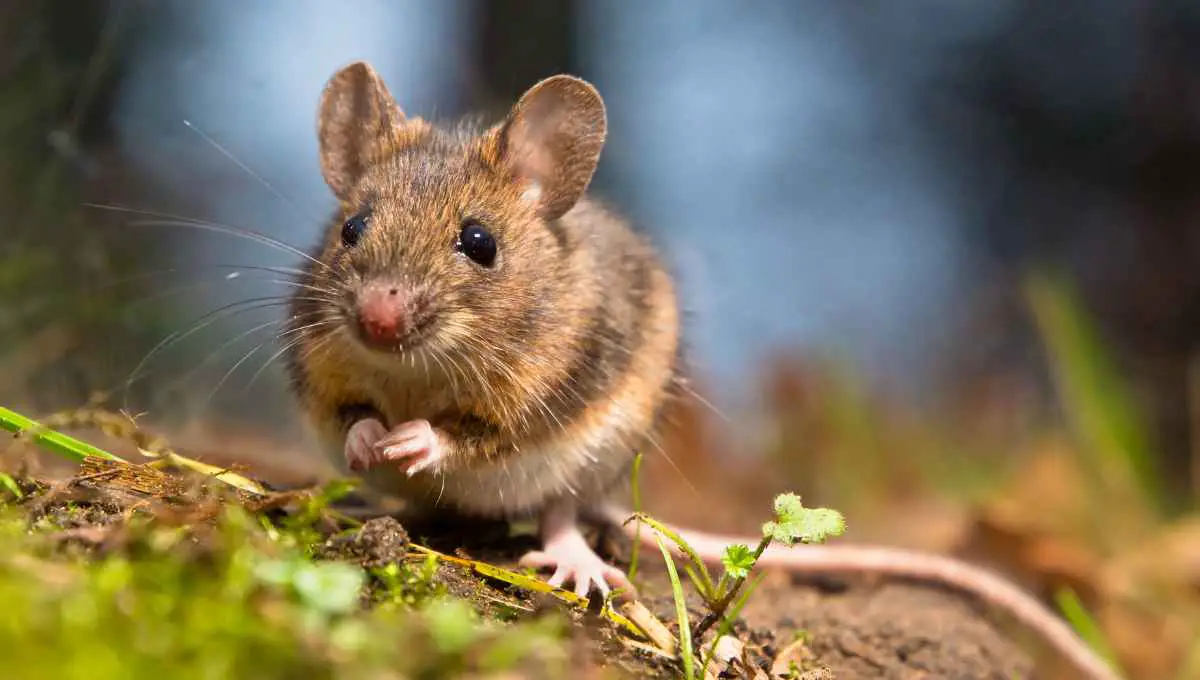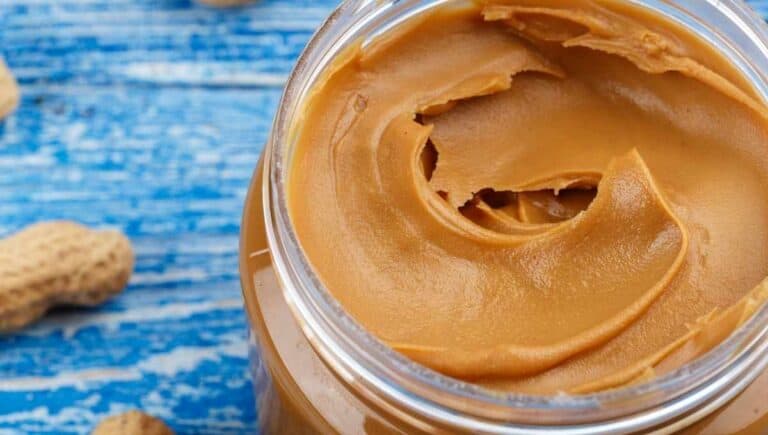Can You Flush a Mouse Down the Toilet? (This Might Happen!)

Many people have wondered about the best practice when disposing of a dead rodent. Can you flush a mouse down the toilet? This question often arises when homeowners are faced with a mouse infestation in their homes.
Flushing a mouse down the toilet is not a safe or ethical disposal method. It can cause plumbing blockages and harm the environment. Other safer and more appropriate methods exist to dispose of a mouse (dead or alive).
So, if you’re dealing with a mouse infestation in your home, what options do you have for getting rid of these unwanted guests? In this blog post, we will discuss alternative methods for controlling and removing mice from your home that are both humane and effective.
This post contains affiliate links. This means Household Blogger may earn a commission should you make a purchase using any of our links. Please refer to our full affiliate disclosure policy for full details.
Here’s a Quick Pro Tip!
Our favorite products from Amazon to keep mice out of your house:
1. Polyurethane Expanding Spray Foam – Seal gaps and cracks in doors and windows to prevent mice from entering.
2. Door Sweep – Install door sweeps at the bottom of doors to prevent mice from entering.
3. Steel Wool – Stuff steel wool into gaps and openings where mice may be entering.
Is It Safe to Flush a Mouse Down the Toilet?
When it comes to disposing of a dead mouse, flushing it down the toilet might seem like an easy solution. After all, the mouse is small, and the toilet seems like a convenient way to get rid of it. However, is it safe to flush a mouse down the toilet?
The short answer is no; it is not safe to flush a mouse down the toilet. There are several reasons for this.
Risks and Dangers of Flushing a Mouse
It’s not ideal to flush deceased mice down the toilet since they can easily get stuck in the pipes. This can lead to clogs and backups, which can cause damage to your plumbing system.
In some cases, the damage can be so severe that the entire plumbing system may need to be replaced. This typically results in significant expense and inconvenience.
The second risk is related to public health. Mice can carry harmful bacteria and diseases, which can be transmitted to humans through contact with their remains. Flushing a mouse down the toilet can increase the risk of exposure to these pathogens, which can cause illnesses ranging from mild to severe.
Finally, flushing a mouse down the toilet can also have environmental consequences. The remains can end up in the water supply, which can have negative effects on aquatic life and ecosystems in lakes and oceans across the world.
Overall, the risks and dangers of flushing a mouse down the toilet are significant and should be taken seriously. It is important to dispose of mice safely and appropriately to protect public health and the environment.
Health Hazards and Precautions to Take
There are several health hazards associated with flushing a mouse down the toilet. As mentioned earlier, mice can carry harmful bacteria and diseases (Hantavirus, Leptospirosis, etc.) that can be transmitted to humans through contact with their remains.
Therefore, it is important to take precautions when disposing of a dead mouse to protect yourself and others from potential health risks.
The first precaution you should take is to wear gloves when handling the mouse. This will help prevent direct contact with the remains and reduce the risk of exposure to harmful bacteria and diseases.
It is important to properly seal the mouse in a plastic bag or another container before disposing of it. This will help prevent the spread of pathogens and ensure that the remains are contained.
Additionally, it is also important to properly sanitize any surfaces or areas that may have come in contact with the mouse, such as countertops, floors, and toilets. This can be done using a disinfectant spray or wipes.
Finally, washing your hands thoroughly with soap and water after handling a dead mouse or any materials that may have come into contact with it is recommended. This will help further reduce the risk of exposure to harmful bacteria and diseases.
Alternatives to Flushing a Mouse Down the Toilet
Flushing a mouse down the toilet may seem like a quick and easy way to dispose of a dead mouse, but it can lead to serious plumbing issues and cause harm to the environment.
Humane Methods of Disposal
If you’ve found a mouse in your home and you’re looking for a humane way to dispose of it, there are a few options to consider. Although, It’s important to note that mice are living creatures and should be treated with respect, even if they’re considered pests.
One option is to use a humane mousetrap. These traps are designed to capture mice without harming them, allowing you to release them back into the wild. You can purchase these traps online or at your local hardware store. Once you’ve captured the mouse, take it at least a few miles away from your home before releasing it.
Another option is to use a bucket trap. This involves placing a bucket or other container on the ground with a ramp leading up to it. Place bait in the container to attract the mouse, and once it enters the container, it will fall into the bucket below. You can then release the mouse outside, away from your home.
If you’re uncomfortable handling live mice or would prefer not to, contact a professional pest control service specializing in humane animal removal. These services will be able to capture and relocate the mouse for you safely.
No matter what method of disposal you choose, it’s always best to prevent mice from entering your home in the first place. This can be done by sealing up any cracks or holes in your home’s exterior, keeping your home clean and free of food debris, and storing food in airtight containers.
Alternatively, there are several natural deterrents that you can use to help keep mice away from your home, to begin with. These include:
- Peppermint oil: Mice do not like the smell of peppermint oil, so using it as a natural repellent can be effective. You can soak cotton balls in peppermint oil and place them in areas where mice are known to frequent, such as near entryways or in cabinets.
- Cayenne pepper: Sprinkling cayenne pepper in areas where mice are known to enter can also be effective. The strong scent and spicy flavor will repel mice and keep them from entering your home.
- Garlic: Garlic has a strong odor that mice do not like. You can crush garlic cloves and place them in areas where mice are known to frequent, or you can sprinkle garlic powder in these areas.
- Steel wool: Mice can’t chew through steel wool, so placing it in areas where they might enter your home, such as around pipes or in small holes, can help keep them out.
- Natural predators: Mice are prey animals, so having natural predators around your home can help keep them away. This includes animals such as cats, owls, and snakes. While having a snake in your home may not be practical, having a cat or two can effectively keep mice at bay.
It’s important to remember that while these natural deterrents can be effective, they may not be enough to keep mice away completely. If you have a serious mouse problem, it may be necessary to use additional methods such as traps or professional pest control services.
Legalities of Flushing a Dead Animal Down the Toilet
Flushing a dead animal down the toilet is generally not legal in most places. The legality of flushing a dead animal down the toilet depends on several factors, such as the type of animal, the state or country in which you reside, and the method of disposal.
Local and State Regulations
In the United States, it is illegal to flush a dead animal down the toilet in most states. In some states, it is illegal to flush any animal down the toilet, dead or alive. This is because flushing a dead animal down the toilet can contaminate the water supply and cause environmental harm.
Additionally, some states may have specific regulations regarding the disposal of dead animals, which may require you to follow certain procedures, such as burying the animal or contacting a local animal control agency.
Overall, it is important to dispose of dead animals in a responsible and legal manner. Flushing a dead animal down the toilet may seem like an easy solution, but it can cause harm to the environment and may result in legal consequences.
You might also enjoy our post on Whether You Can flush Hair Down The Toilet
Environmental Concerns and Considerations
Flushing a mouse down the toilet can have significant environmental impacts. The first consideration is the potential contamination of the water supply. Mice, like all animals, carry bacteria and diseases that can be harmful to human health.
Flushing a mouse down the toilet can introduce these contaminants into the water supply, which can be a serious public health concern.
Additionally, flushing a mouse down the toilet can also cause harm to the sewer system and the environment. Mice are not biodegradable and can cause blockages in the pipes, as we’ve mentioned.
A blockage can lead to sewage backups, which can be both unsanitary and costly to repair. In extreme cases, sewage backups can cause flooding, damaging homes and other property.
Furthermore, flushing a mouse down the toilet can also contribute to water pollution. The chemicals and drugs used to kill mice, such as rat poison, can be released into the water supply when the mouse is flushed. These chemicals can harm aquatic life and have long-lasting impacts on the environment.
Overall, flushing a mouse down the toilet can have serious environmental impacts, and it is not a responsible or safe method of disposal. Instead, it is recommended to dispose of dead mice in the trash or by contacting a local animal control agency for proper disposal.
What Happens to a Mouse When You Flush It Down the Toilet?
When you flush a mouse down the toilet, it does not simply disappear. Instead, the mouse will go through the sewer system, which can have several disastrous outcomes.
Plumbing and Environmental Concerns
The first plumbing concern is the potential for blockages in the pipes. As previously mentioned, the sewer system is not designed to handle solid waste other than human waste and toilet paper.
Flushing a mouse down the toilet can cause the pipes to become clogged, which can result in sewage backups and potential flooding.
In addition to blockages, flushing a mouse down the toilet can also damage the plumbing system. Mice are not biodegradable and can cause damage to the pipes as they move through the system. Over time, this can lead to costly repairs and replacements of the pipes.
Another environmental concern is the potential contamination of the water supply. As discussed in the previous section, mice carry bacteria and diseases that can be harmful to human health.
Flushing a mouse down the toilet can introduce these contaminants into the water supply, which can be a serious public health concern. Additionally, the chemicals and drugs used to kill mice can also be released into the water supply, causing further harm to the environment.
Instead, it is recommended to dispose of dead mice in the trash or by contacting a local animal control agency for proper disposal.
You might also enjoy our post on How Much It Costs to Unclog a Toilet
Public Health Concerns
Flushing a mouse down the toilet can pose several public health concerns. The first concern is the potential for the spread of disease. Mice, like all animals, carry bacteria and diseases that can harm human health.
Flushing a dead mouse down the toilet can introduce these contaminants into the water supply, spreading disease.
Preventing Mice Infestations in Your Home
Preventing mice infestations in your home is crucial to avoid the need for extreme measures like flushing them down the toilet. In this section, we’ll look at some methods to prevent mice from entering and living in your home.
Common Entry Points and How to Seal Them
Mice are attracted to various things in our homes and gardens, including food, shelter, and warmth. Here are some common attractants:
- Food: Mice are primarily attracted to food sources. They will eat almost anything, including grains, seeds, nuts, fruits, vegetables, and even pet food. Open containers of food or crumbs left on countertops and floors can easily attract mice.
- Clutter: Mice love clutter because it provides hiding spots and nesting materials. If you have piles of clothes, papers, or boxes in your home or yard, you may be providing a perfect environment for mice to thrive.
- Warmth: Mice are attracted to warmth, especially in colder months. They may seek shelter in your home’s walls, attic, or basement. If you have cracks or holes in your walls or foundation, mice can easily enter and make themselves at home.
- Water: Like all living creatures, mice need water to survive. Leaking pipes or standing water in your home or yard can attract mice and provide them with a source of hydration.
- Garbage: Leftover food scraps and other organic waste in your garbage can attract mice. Make sure to keep your garbage cans tightly closed and empty them regularly.
While all of these can attract mice, they first need a point of entry. These are some of the most common ways that mice get into your house and how you can prevent them from entering:
- Gaps in windows and doors: Check for gaps around windows and doors, and seal them with weather stripping or door sweeps.
- Holes in walls: Look for holes in walls where pipes and wires enter your home, and seal them with caulking or foam.
- Cracks in the foundation: Inspect the foundation of your home for any cracks or gaps and seal them with cement or mortar.
- Attic vents: Install screens over attic vents to prevent mice from entering your attic.
- Chimney: Install a chimney cap to prevent mice from entering through the chimney.
- Garage doors: Install weather stripping around garage doors to seal gaps.
- Pet doors: Mice can enter through pet doors, so consider closing them at night or installing a door with a locking mechanism.
You can seal these entry points using materials like steel wool, copper mesh, caulking, foam, or cement. Be sure to inspect your home regularly and seal any new entry points that may appear.
DIY Pest Control Methods
DIY pest control can be an effective way to address minor pest problems in your home or garden. Here are some methods you can try:
- Identify the pest: It is important to identify the type of pest you are dealing with to determine the best control method.
- Keep a clean home: Proper sanitation and hygiene prevent pests from invading your home. Clean up spills and crumbs immediately, remove the garbage regularly, and keep your kitchen and bathrooms free from standing water.
- Seal up entry points: Pests can enter your home through small cracks and gaps around doors, windows, and pipes. Seal these entry points with caulk or weather stripping.
- Use sticky traps: Sticky traps can be used to capture and monitor pests such as mice, cockroaches, and spiders.
- Make your own natural pest repellents: Essential oils such as peppermint, eucalyptus, and lavender can be used to repel pests. Simply mix a few drops of essential oil with water and spray around the areas where pests are likely to be.
- Use diatomaceous earth: Diatomaceous earth is a natural powder made from fossilized diatoms. It can be used to kill pests such as ants, fleas, and bed bugs by dehydrating their exoskeletons.
- Create physical barriers: Use physical barriers such as netting or mesh to keep pests out of your garden.
- Keep plants healthy: Healthy plants are less likely to attract pests. Water and fertilize your plants regularly, and remove any dead or diseased plant material.
Remember that if your pest problem is severe or you are dealing with potentially dangerous pests such as venomous spiders or rodents, it is best to consult a professional pest control company.
Final Thoughts
In conclusion, flushing a mouse down the toilet is not a humane or effective way to deal with a mouse infestation. It is important to understand the risks associated with flushing a mouse down the toilet, such as clogging your pipes and contaminating your water supply.
Instead, consider using humane mouse traps or other DIY pest control methods to safely and effectively get rid of mice.
Remember, prevention is key – keep your home clean, seal any cracks or holes, and eliminate food sources to prevent a mouse infestation in the first place.








